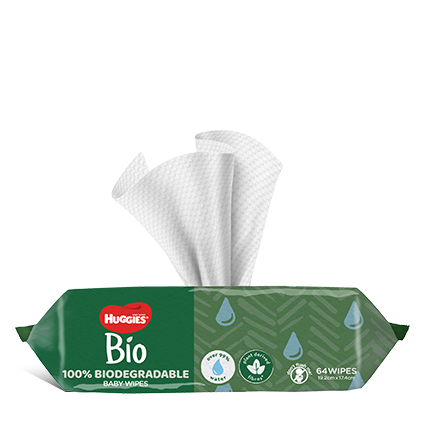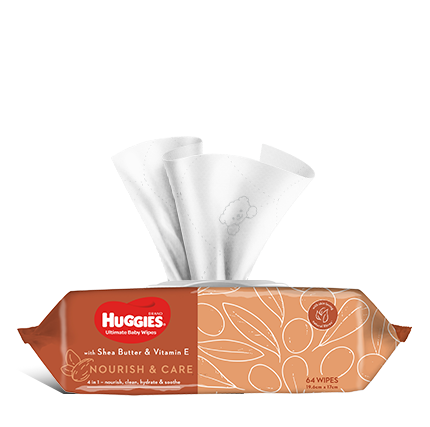Where once we blamed sugar for the wayward behaviour of our children, we now know that it is far more likely to be a chemical of some sort.
There is mounting evidence against the use of the many additives in our foods, particularly in foods for children, and indeed, an increasing number of countries are banning the use of more and more additives. Of course, many agencies note that additives are important in our food to ensure they remain safe, palatable and last well. Recently, some manufacturers have opted to use natural additives, for example natural colourings; however, even some of these are deemed to have a questionable effect on humans. Those of us who are keen to avoid additives need also to be mindful of marketing, for example, the use of terms such as ‘free from colourings’ doesn’t mean the product is free from additives, just those that are in the colourings category. Incidentally, the category of flavourings doesn’t appear to be as unregulated as other additives.
Why are food additives used?
Additives are commonly used to improve the taste, texture and even appearance of many processed foods; for example, winterized oils may be rather suspicious-looking and bad-tasting without additives. They are, of course, also used to improve the shelf-life of some foods, and also to prevent them from going off. Oils and the addition of antioxidants to slow the rate at which the oil goes off, or oxidizes, is a good example. Additives can be used in processing; for example preserving foods such as dried fruit with sulphur dioxide. Lastly, additives can assist companies in reducing waste and improving profit.
Where can you find a full list of additives?
Food Standards Australia New Zealand oversees the use of additives in products and their safety for consumers. The Food Standards website holds a complete list of food additives by both alphabetical and numerical order.
What does the research say?
It seems that current research highlights at least 50 common additives that are dubious, according to research from the Royal Prince Alfred Hospital’s Allergy Unit in Sydney. Many additives still used in Australia and NZ are banned overseas, for example food colouring 120 (yellow). Whole foods, approved organic foods and home-grown foods are naturally good choices if you are seeking to go additive-free. Of course, the argument that you ’shouldn’t throw the baby out with the bath water’ is likely to be raised. Still, if history is a good predictor of the future, you can see the use of additives wouldn’t gain more support.
But is there more to it than that?
Well, it seems a number of issues are raising eyebrows. Such questions include:
- Can additives accumulate over time in food sources and the body?
- What is the effect of a mix or cocktail of additives? Much of the testing is done on single additives. How do they interact with each other and what is the effect on our body?
- Testing criteria and protocol: Would more additives be linked to behavioural and psychological issues if this were included in the testing and research?
Some living examples
So let’s take a closer look at just a few of the common additives, and in particular those that appear in foods often eaten by children, so you can make up your own mind.
Benzene
In technical documents benzene is referred to as ‘a commonly used industrial chemical’, so it doesn’t take much to convince us that it probably isn’t ideal in our foods. The addition of sodium benzoate to a product that also has ascorbic acid opens the door to chemical reactions that lead to the production of benzene.
Benzoic acid and benzoates are thought to be linked to asthma, hyperactivity in children and alter brain functioning.
Fizzy drinks are common benzene-containing foods as are flavoured mineral waters, cordial, some fruit juices and drinks, energy drinks and flavoured/sports water. However, it can also turn up in oral preparations (mouth washes etc), sweets, medicines, and a number of other foods.
So next time you stroll down the drinks isle of the supermarket, pick up a couple of these products and scan the ingredients list for sodium benzoate (211) to see how prevalent it is.
Sulphur dioxide (220)
A preservative regularly used on dried fruit, but can also turn up in soft drinks, juice, cordial, wine and even vinegar. It is reputed to cause tummy upsets, nausea, diarrhoea and rashes. 220 has also been linked to asthma, and it seems it can also affect some nutrients in the body.
Tartrazine (102, yellow)
Banned or restricted in a number of countries, 102 turns up in sweets, drinks, jams, cereals, pretty much anything that needs a bit of yellow colouring. Possible issues range from links to asthma, skin rashes, behavioural changes, even hyper-agitation in children.
Chocolate brown (155)
Banned or restricted in a number of countries including the USA, Norway, France and many more. Used in chocolate cake mixes, it’s thought to be linked to asthma, cause skin rashes and cause adverse reactions in children with ADHD.
Monosodium L-glutamate (MSG, 621)
Commonly known to many people, possibly one of the early compounds to alert the community to the dangers additives may pose to our health. Found in food, notably in many of the ready made noodle packs, cigarettes and animal food, it was once widely used in some takeaway foods but with increased consumer concern it is far less common. Asthma seems a reasonable link, along with skin rashes and altered behaviour.
Aspartame (Nutrasweet, Equal, 951)
A common artificial sweetener which has been reasonably well researched with a number of dubious findings. Aspartame appears to cause migraines, and in line with its apparent effect on the brain, research is ongoing in terms of potential links to brain tumours. Artificially sweetened products really don’t have great support with recent research suggesting they can affect nutrients and may influence weight gain.
These are just a few examples; it seems most additives have some shadow of suspicion over them, depending on whom you talk to.
Where to start
- Read ingredients labels; additives must be labelled if the product is produced in Australia or NZ (and most Western countries).
- Opt for sun-dried or home-prepared dried fruit.
- Wash all produce thoroughly.
- Reduce sweets as much as possible to avoid exposure to colourings.
- Opt for products with natural colourings (after all, a party sometimes calls for sweets).
- Use cold-pressed oils to avoid oils that are so processed they need the addition of antioxidants and other chemicals to stabilise them and make them more palatable.
- Avoid overly flavoured foods and those with MSG (621), eg. BBQ or chicken-flavoured chips and biscuits, also packet noodles notoriously have MSG in their flavour sachets. Buy plain varieties or brands that don’t use additives.
- Avoid processed meats, they are not only generally the greatest source of trans-fats but also tend to contain a number of nitrite and nitrate-based additives.
- Avoid ‘junk’ drinks such as cordials and fizzy drinks that commonly have benzoates. Opt for water or unsweetened, natural, freshly made juices or plain milk (organic is ideal).
- It’s good to keep in mind that ‘Ingredients must be declared in the statement of ingredients in descending order of ingoing weight’ (Food Standards code, statement 1.2.4).
- Consider going organic, or at least avoid eggs, meat (it seems nitrates find their way into mince), canned fish and other foods that have added colour as a visual enhancer. If you prefer to select just some organics, opt for organic produce where you eat the skin (which in non-organic produce may be covered with pesticides).
Going clean can be confusing
As you wade through the well-researched and wellmeaning information, it may become obvious that just because a product is additive-free doesn’t mean it is free from GE ingredients, from excessive fat, sugar or salt. Furthermore, some just contain too few nutrients.
Going additive-free is a great idea, but when selecting healthy food it isn’t the only consideration. Like most things in nutrition, it’s about the whole picture.
Food Standards Australia NZ listing*
What do food additives do? Some food additives have more than one use. Food additives are listed according to their functional or class names.
Examples of the most common functions are:
Acids Acidity regulators Alkalis help to maintain a constant acid level in food. This is important for taste, as well as to influence how other substances in the food function. For example, an acidified food can retard the growth of some micro-organisms.
Anti-caking agents reduce the tendency of individual food particles to adhere and improve flow characteristics.
For example, seasoning with an added anti-caking agent flows freely and doesn’t clump together.
Antioxidants retard or prevent the oxidative deterioration of foods. For example, in fats and oils, rancid flavours can develop when they are exposed to oxygen. Antioxidants prevent this from happening.
Bulking agents contribute to the volume of the food, without contributing significantly to its available energy. For example, sugar often contributes to the volume of lollies, while some low-joule foods need bulking agents added to them to replace the bulk normally provided by sugar.
Colourings add or restore colour to foods. For example, icing mixture is coloured to make it more attractive on cakes.
Emulsifiers facilitate or maintain oil and water from separating into layers. For example, emulsifiers may be used in margarine to prevent oil forming a layer on top of the margarine.
Firming agents Stabilisers maintain the uniform dispersion of substances in solid and semi-solid foods.
Flavour enhancers enhance the existing taste and/or odour of a food.
Foaming agents maintain the uniform dispersion of gases in aerated foods.
Gelling agents modify the texture of the food through gel formation.
Glazing agents impart a coating to the external surface of the food, for example, a wax coating on fruit to improve its appearance.
Humectants reduce moisture loss in foods. For example, glycerine may be added to icing to prevent it from drying out.
Preservatives retard or prevent the deterioration of food by micro-organisms, and thus prevent spoilage of foods.
Raising agents liberate gases, thereby increasing the volume of a food. Raising agents are often used in baked goods.
Sweeteners replace the sweetness normally provided by sugars in foods without contributing significantly to their available energy.
Thickeners increase the viscosity of a food. For example, a sauce might contain a thickener to give it the desired consistency.
*Sourced directly from: Food Standards Australia and New Zealand
Helpful websites and organisations
Food Standards Australia and New Zealand
Additive Education – Supporting Additive Free Eating
Additive Alert – Your guide to safer shopping
Royal Prince Alfred Hospital Allergy Unit
This information has been provided by Leanne Cooper from Sneakys baby and child nutrition. Leanne is a qualified nutritionist and mother of two very active boys.
For more information see Kid’s nutrition or Baby Care
Last Published* May, 2024
*Please note that the published date may not be the same as the date that the content was created and that information above may have changed since.


















